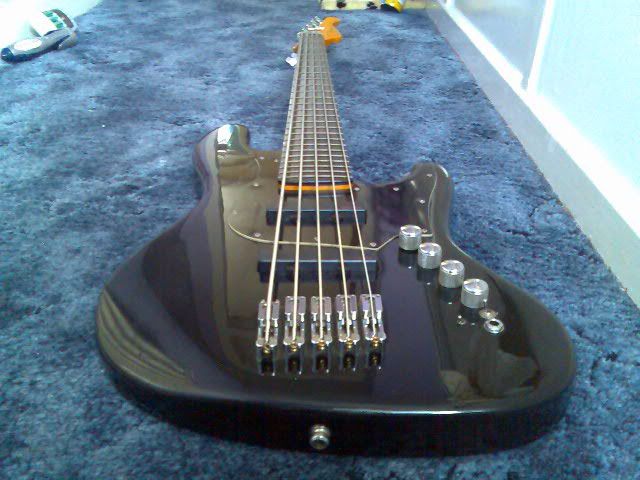Broken Foot
Moderator: Priests of Syrinx
Could THIS be it?
John Logie Baird (1888 - 1946)
John Logie Baird, a Scottish engineer and entrepreneur, achieved his first transmissions of simple face shapes in 1924 using mechanical television. On March 25, 1925, Baird held his first public demonstration of television at the London department store Selfridges on Oxford Street in London. In this demonstration, he had not yet obtained adequate half-tones in the moving pictures, and only silhouettes were visible.
In the first week of October, 1925, Baird obtained the first actual television picture in his laboratory. At this time, his test subject was a ventriloquist's dummy, Stooky Bill, which was placed in front of the camera apparatus. Baird later recollected,
"The image of the dummy's head formed itself on the screen with what appeared to me an almost unbelievable clarity. I had got it! I could scarcely believe my eyes and felt myself shaking with excitement."
After much discussion with his business associates, and further improvements, Baird decided to publicly demonstrate television on Tuesday 26 January, 1926, again at Selfridge's department store. This was the first opportunity for the general public to see television. The Baird company continued to publicize this historic demonstration, and J. L. Baird's other scientific breakthroughs as they feverishly worked to obtain financial backing and construct a line of home receivers.
With Baird's transmitting equipment, the British Broadcasting Corporation began regular experimental television broadcasts on September 30, 1929. By the following year, most of Britain's major radio dealers were selling Baird kits and ready-made receivers through retail and by mail order.
John Logie Baird (1888 - 1946)
John Logie Baird, a Scottish engineer and entrepreneur, achieved his first transmissions of simple face shapes in 1924 using mechanical television. On March 25, 1925, Baird held his first public demonstration of television at the London department store Selfridges on Oxford Street in London. In this demonstration, he had not yet obtained adequate half-tones in the moving pictures, and only silhouettes were visible.
In the first week of October, 1925, Baird obtained the first actual television picture in his laboratory. At this time, his test subject was a ventriloquist's dummy, Stooky Bill, which was placed in front of the camera apparatus. Baird later recollected,
"The image of the dummy's head formed itself on the screen with what appeared to me an almost unbelievable clarity. I had got it! I could scarcely believe my eyes and felt myself shaking with excitement."
After much discussion with his business associates, and further improvements, Baird decided to publicly demonstrate television on Tuesday 26 January, 1926, again at Selfridge's department store. This was the first opportunity for the general public to see television. The Baird company continued to publicize this historic demonstration, and J. L. Baird's other scientific breakthroughs as they feverishly worked to obtain financial backing and construct a line of home receivers.
With Baird's transmitting equipment, the British Broadcasting Corporation began regular experimental television broadcasts on September 30, 1929. By the following year, most of Britain's major radio dealers were selling Baird kits and ready-made receivers through retail and by mail order.
Don't start none...won't be none.
All I have are two roses out back the house. You may come visit them!
Okay, regarding "stookie," this is what I found:
According to the Dictionary of the Scots Language:
STOOKIE, n., adj. Also stooka, -ey, stoukie, stucky; stooga (ne.Sc.). Sc. forms and usages of Eng. stucco. See P.L.D. ? 40. [ˈstuki, -kə; ne.Sc. + ˈstugə] I. n. 1. As in Eng., plaster of Paris, the plaster used to encase a broken limb. Gen.Sc.; pipeclay (Lnk., Gall. 1971); transf. a nickname for a plasterer (Per. 1971). Freq. attrib. as in stookie eemage, -man(nie), mumie, a plaster statue(tte) (Mry., Bnff. 1921 T.S.D.C.), an effigy; a scarecrow (Fif. 1950).
So the term for the cast comes from the use of the word as a name for the plaster of Paris used to make said cast.
Here is a poem they have for an example of the word being used:
Scotsman 9 Mar 14:
The Lord Provost of Edinburgh fell
Down the stairs on her bahookie;
Though she was sober
She couped right over ?
And now she?s wearing a stookie.
So, there ya go!
Okay, regarding "stookie," this is what I found:
According to the Dictionary of the Scots Language:
STOOKIE, n., adj. Also stooka, -ey, stoukie, stucky; stooga (ne.Sc.). Sc. forms and usages of Eng. stucco. See P.L.D. ? 40. [ˈstuki, -kə; ne.Sc. + ˈstugə] I. n. 1. As in Eng., plaster of Paris, the plaster used to encase a broken limb. Gen.Sc.; pipeclay (Lnk., Gall. 1971); transf. a nickname for a plasterer (Per. 1971). Freq. attrib. as in stookie eemage, -man(nie), mumie, a plaster statue(tte) (Mry., Bnff. 1921 T.S.D.C.), an effigy; a scarecrow (Fif. 1950).
So the term for the cast comes from the use of the word as a name for the plaster of Paris used to make said cast.
Here is a poem they have for an example of the word being used:
Scotsman 9 Mar 14:
The Lord Provost of Edinburgh fell
Down the stairs on her bahookie;
Though she was sober
She couped right over ?
And now she?s wearing a stookie.
So, there ya go!
Onward and Upward!




